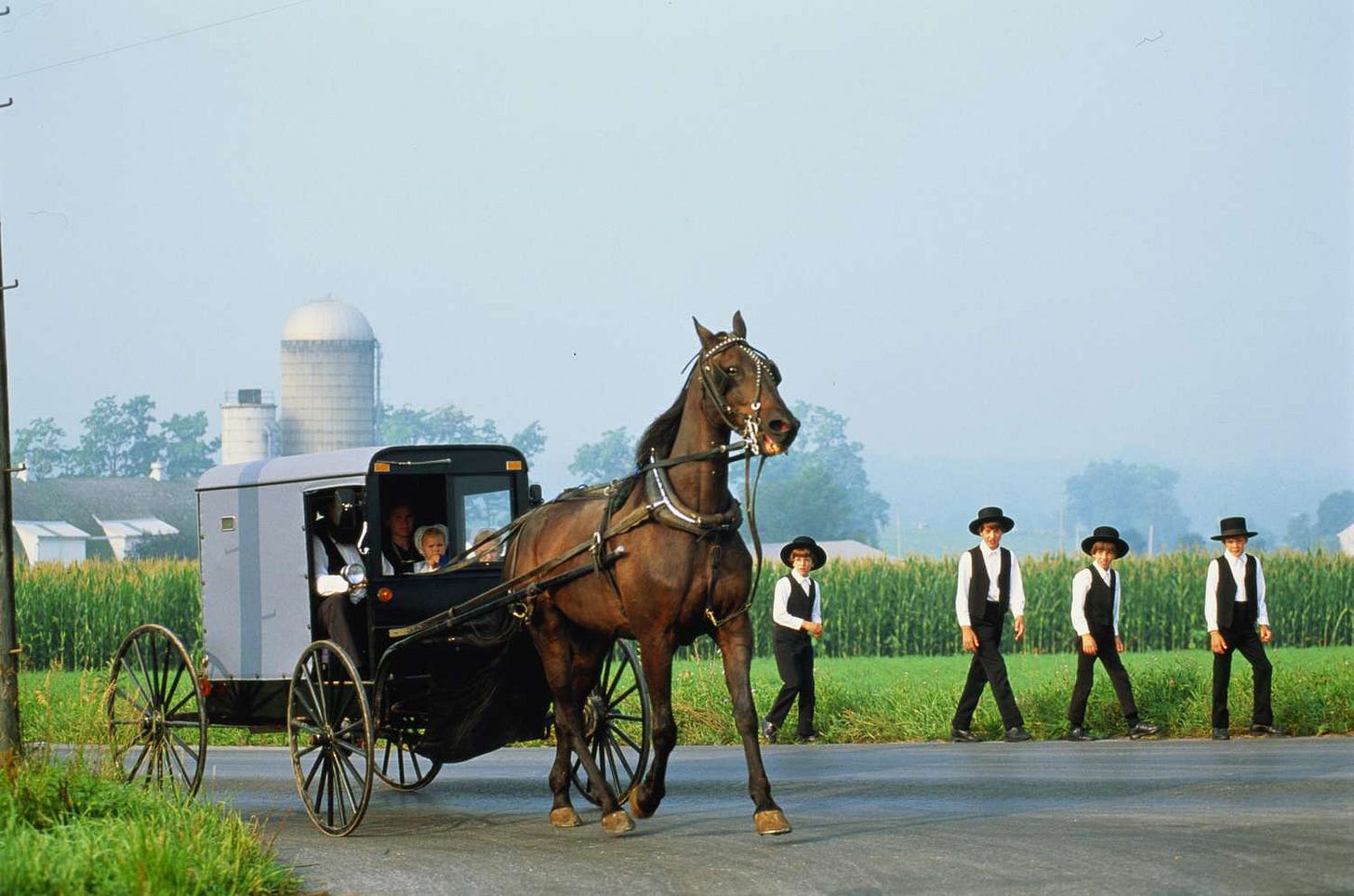
The Amish communities, often dismissed as a quaint relic of the past, may hold the key to some of the most pressing health challenges of modern society. I’ve found myself personally fascinated with the Amish lifestyle, and how they seem to avoid all major issues the modern world deals with everyday. Amidst our era of technological marvels and medical advancements, lifestyle diseases such as diabetes, cancer, and Alzheimer's continue to plague western civilizations. However, these illnesses appear far less frequently among the Amish, despite their lack of reliance on contemporary healthcare. This article aims to explore how the Amish lifestyle contributes to lower rates of these diseases, and what we might learn from this unique community.
The Amish Lifestyle: A Brief Overview
The Amish are a Christian group with Swiss-German origins, mostly residing in the United States and Canada. They live a life of simplicity, humility, and piety, eschewing modern conveniences like electricity, cars, and advanced medical treatments. Their community life revolves around farming, craftsmanship, and faith. All of these elements combine to create a lifestyle that's strikingly different from mainstream society.
Low Rates of Lifestyle Diseases: The Data
Numerous studies have found that the Amish have substantially lower rates of lifestyle-related health issues like diabetes, cancer, and Alzheimer's. For instance, a study by the University of Maryland found that the incidence of cancer was 60% lower among the Amish compared to the general population. Similar trends have been observed for other ailments, painting a picture of a community largely unaffected by the health crises facing modern society. One result of this is that only about 4% of Amish people are obese, compared with 36.5% of the overall U.S. population. Amish children are about one-third as likely as non-Amish to be obese, according to a 2012 study in PLOS One. This means 50% lower rates of Type 2 diabetes.
The near absence of tobacco in the Amish community–some men do smoke cigars–results in a 63% lower rate of tobacco-related cancers, according to a 2004 study of Ohio’s Amish population. The Amish also had rates of all cancers that were 40% lower than the rest of the Ohio population.
Factors Contributing to Better Health
Physical Activity
Amish communities are primarily agrarian, requiring constant physical labor. According to a study by the University of Tennessee, the average Amish man takes about 18,425 steps per day, compared to the general recommendation of 10,000 steps for maintaining good health. Amish men spent about 10 hours a week doing vigorous activities, women about 3 1/2 hours (heavy lifting, shoveling or digging, shoeing horses, tossing straw bales). Men averaged 43 hours of moderate activity a week, women about 39 hours (gardening, feeding farm animals, doing laundry). We feel virtuous if we manage to eke out half an hour a day on the Peloton. Including other forms of manual labor–lifting, chopping, sowing, planting–the Amish are six times as active as a random sample of people from 12 countries.
Diet
Their diet is high in natural, unprocessed foods such as fruits, vegetables, and whole grains. They eat what they grow, free of the chemicals and preservatives that populate most modern foods. Nearly all Amish homes have a sizable garden, tended by the woman of the home with help from her children. Sweet corn, celery, beets, carrots, potatoes, tomatoes, peas, and a wide variety of other vegetables are grown in the typical Amish garden. Amish may have fruit trees or grapevines on their property as well. Amish eat a lot of fresh foods in the growing and harvest months, and can large quantities of fruits and vegetables for the winter.
Strong Social Ties
Amish communities are close-knit, with strong social support systems. This can positively impact mental health, which in turn has a beneficial effect on physical well-being. This keeps the social dilemma out of the equation. Kids are seeking approval of their peers and close friends, they aren’t trying to impress the everyone around them as you see many kids do this day and age with the turn of the internet at our disposal. It's safe to say the tight-nit communities the amish hold, keep everyone on what seems to be a level playing field amongst each other socially.
Limited Exposure to Environmental Toxins
Their simple lifestyle reduces exposure to environmental factors commonly associated with disease, like pollution and synthetic materials. They keep things very primitive and are very strict in the ways they use agriculture and livestock.
What Can We Learn?
While the Amish lifestyle may not be universally adoptable, there are valuable lessons to be extracted:
Prioritize Physical Activity: Incorporate more physical exercise into daily routines.
Eat Naturally: Opt for organic, unprocessed foods whenever possible.
Strengthen Social Networks: Build and maintain strong social ties for mental well-being.
Be Environmentally Conscious: Limit exposure to environmental toxins.
Conclusion
The Amish way of life offers intriguing insights into how we might combat lifestyle-related diseases. While it's unrealistic to suggest that the entire world should adopt an Amish lifestyle, their approach serves as a powerful reminder of how returning to the basics—be it diet, physical activity, or community ties—can yield substantial health benefits. By examining and incorporating certain aspects of the Amish lifestyle, we may find novel and effective ways to address some of the most challenging health issues of our time.




